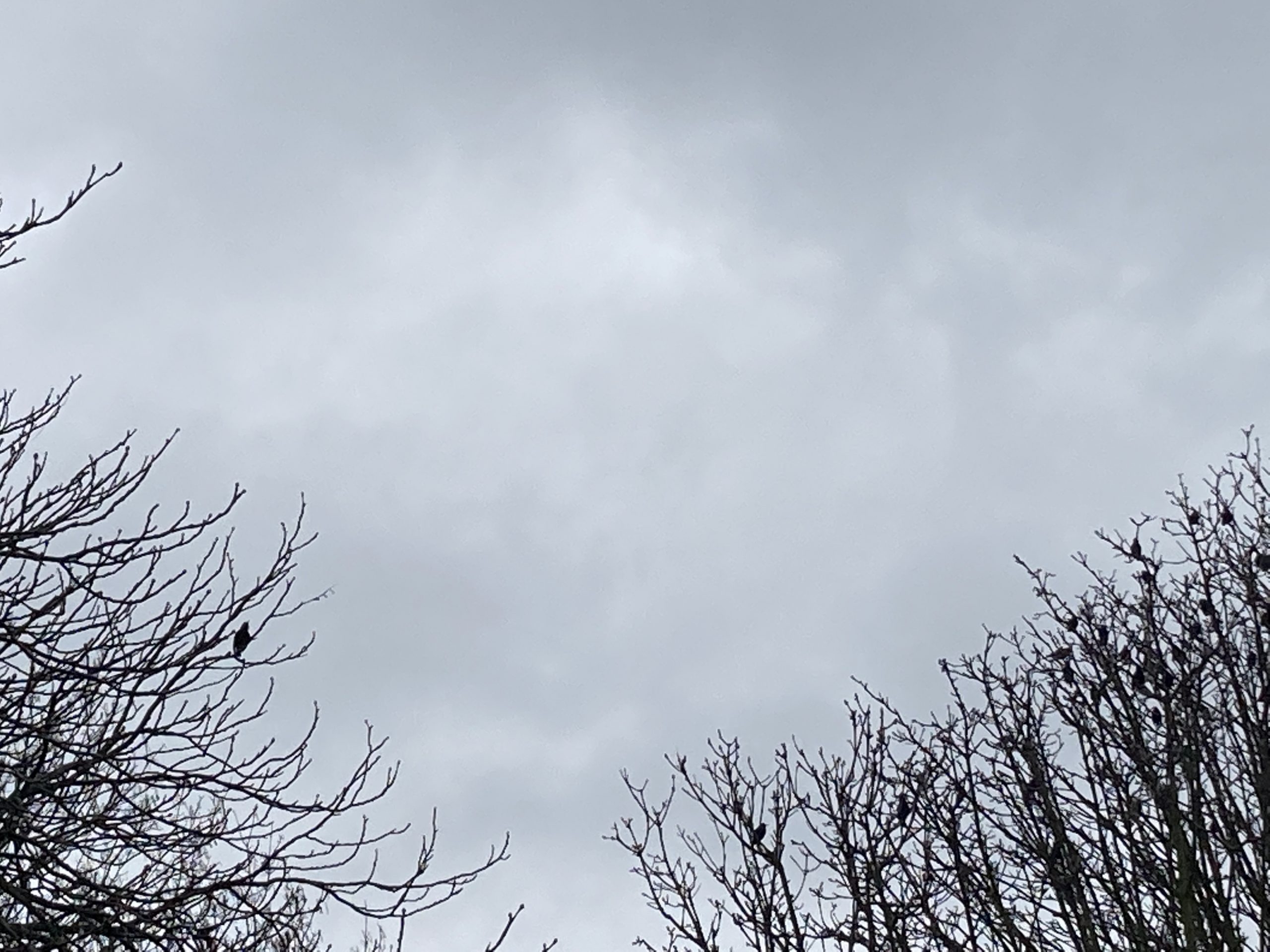Walking at dusk on a grey, overcast or rainy winter day may not bring the reward of a technicolour sunset. But it can deliver in other equally magical ways. A murmuration of starlings is one of them.
As a relatively unusual open area of undeveloped grassland within the boundaries of London, Wanstead Flats provides now rare and protected starlings with the bounty that they need to survive: a range of bugs, insects and worms plus seeds and fruits when supplies of these become scarce. In winter, flock sizes also visibly swell as migrants from Northern Europe join British residents.
Murmurations of starlings on The Flats are more like small undulating flocks but, still, it’s an arresting sight. A large roost of these often overlooked birds can also produce quite a startling sound, which is what drew my attention today, when out for a ‘Rule of 1’ walk with a friend.
Looking up to find the source of the racket, our eyes settled on a distinct congregation of birds in the topmost branches of a horse chestnut tree, so intensely packed together that they could almost pass as leaves – if it were the season for them.
Starlings are known for a range of sounds from melodic song to squabbling chatter to convincing mimic (of other bird species and manmade sounds) but this cumulative effect could only be described as ominously mechanical – the second time this week that I’ve seen or heard birds that appear to be from a robotic world.
The light was too dim and the distance too far to observe the birds in any detail but I’ll make sure to look out for some foraging on the ground over the coming months as they adapt their coats and beaks ready for the mating season: from the black bills and white spotted breast feathers of winter (unusually more pronounced in females) to the yellow (males) or lemon (female) bills and more wholly iridescent plumage of black, green and purple as the white feather tips wear off.
Males also apparently develop a blue band at the base of their beak at breeding time, while females exhibit a pink one – something I’ve never observed up close but will now definitely look out for. They also begin to build their nests in early spring, in prospective holes or cavities of trees, walls or buildings, often lining them with aromatic herbs, which are thought to help stimulate the increased production of immune-boosting white blood cells in developing young.
How and why starlings murmurate as they do is perhaps their most mind-blowing characteristic, at one time prompting hypotheses of inter-bird telepathy, thought transference, magic and mysticism. Only recently have scientists cracked the code to their mesmerising actions, following a study of thousands of starlings in 2013. Rather than leading from the front – which would be impossible for million-strong gatherings – each starling is thought to pay close attention to only their seven closest neighbours: a ‘Rule of Eight’ as it were. Small local changes, large communal twists and turns.
I write this as I watch the live inauguration of President Joe Biden on TV. Could peace and hope murmurate like starlings, swooping across the US and indeed the world – seven acts of kindness inspiring seven more?
I also realise how much I envy the starlings gathering together in their evening roosts. A ‘rule of eight’ would be a gift right now (my mind currently fluttering with memories of a summer briefly peppered with outdoor gatherings of myself and seven friends); a party in its hundreds, positively orgasmic! Really can’t wait for the day when we may flock as such again.

